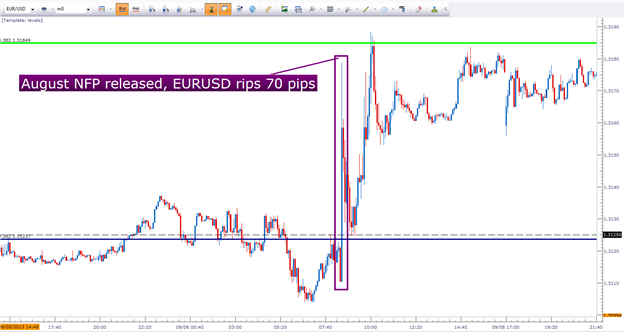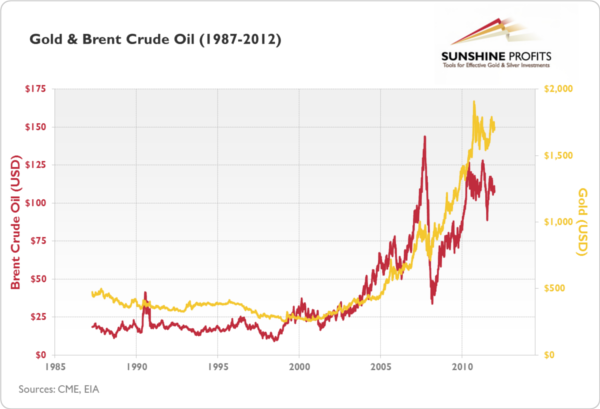How Fundamentals Move Prices in the FX Market
Post on: 7 Май, 2015 No Comment

Talking Points:
- Fundamental Analysis in the Currency markets centers around Macroeconomic data Macroeconomic analysis can be simplified by focusing on interest rates (and expectations) Traders can incorporate Price Action to make analysis even more simplistic
Fundamental Analysis in the stock market involves analyzing the inputs of a company in an effort to forecast future growth potential. For an individual company, this can be a very logical way to look for investment ideas. Fundamental Analysis of a company would involve investigating that companys financial statements, to notice changes from one year to the next; or perhaps looking that the management of that company, and their track record in order to determine how successful they might be towards accomplishing their goals.
In the Forex market, many of those statistics dont exist, and were trading entire economies against one another. In each of these economies, thousands of companies exist trying to maximize their profit potential, so the analysis of a single companys management structure or market share doesnt really mean a whole lot.
Due to the nature of the market, many traders refer to technical analysis, and we showed you how fundamental data events can be traded with technical analysis in the article The Potent Combination of Fundamentals and Price Action. In this article, were going to go in-depth behind how fundamentals impact prices in the FX market.
Why Currency Values Matter
Currency prices matter because of cross-border trade. We investigated this concept in-depth in The Nucleus of the FX Market. In the article, we saw how the nation of Japan was absolutely ravaged by a strong yen; as a stronger yen meant lower profits and margins for Japanese exporters.
The concept of Fundamental Analysis in the Forex Market can be all boiled down to one simple data point: Interest Rates. If interest rates move higher, investors have a greater incentive to invest their capital; and if interest rates move lower, that incentive is lessened. This relationship is at the heart and soul of macroeconomics; and this is what allows Central Bankers to have tools to steward their respective economies.
The decision to increase or decrease rates can bring impact to other economies as well. Lets say, for instance, that you are an American with cash to invest. After having little incentive and extremely low rates for a long time, you notice that The United Kingdom increases rates 25 basis points. This increase in interest rates from the Bank of England can and should bring higher rates in other issues from The United Kingdom; so you may not necessarily buy Gilts or a government bond, but investors can now look to invest in England to get that higher rate of return.
Additional investors thinking the same thing rush into UK bonds, and eventually the price of the British Pound will go up to reflect this additional demand. Now it becomes slightly more difficult for the UK to export goods (similar to the problem Japan faced in The Nucleus of the FX Market ).
A great example of this was in Australia from 2002 leading up to the Financial Collapse; as insatiable demand from China drove growth throughout Australia, unemployment got very low and inflation moved very high. The Reserve Bank of Australia (RBA) moved to increase interest rates, and currency prices followed.
The Aussie more than doubled while RBA moved rates from 4.25% to 6.75%
Created with Marketscope/Trading Station II
This is an interest rate cycle, and it drives capital flows that are at the heart of the FX market.
How Interest Rate Cycles Drive Economies
It all goes back to the incentive to invest. If Central Bankers want to slow down their economy, they look to raise rates. If they want to encourage more growth within an economy, they look to decrease rates.
Higher or lower rates bring a two-pronged impact on the economy.
The first and most obvious impact is the incentive to invest. If rates increase, that incentive to invest also increases; and if rates decrease, so does the incentive to lock up ones money.
The second impact is what this does for capital expenditures. If rates decrease, the attractiveness of locking up a long-term loan at the new lower rate is much higher than it was previously. The incentive to buy big-ticket items like homes, and cars is now higher.
And when you buy a home or a car, the homebuilder or car maker has to turn around to pay for their materials and workers. If the lower rates increase the number of homes or cars that are being purchased, this amounts to growth. Homebuilders and car makers will eventually have to hire new workers to keep up with the demand; and as demand for workers increases, so will the wages that are needed to attract qualified candidates.
This is how lower interest rates can bring higher employment and inflation (often shown as CPI or Consumer Price Index); and its at this point that Central Bankers are going to investigate increasing rates in an effort to prevent the economy from over-heating.
If interest rates stay low, the effects of over-heating could be immense. Prices can continue inflating, and if left unchecked could bring hyperinflation.
Imagine going to the store to buy a gallon of milk and seeing the price at 27 dollars. I dont know about you, but Id freak out at seeing something like this. Then my mind would wander to other areas where costs might be increasing. If a gallon of milk is 27 dollars, then how much will that new car cost me? How much is milk going to cost tomorrow?
So, Central Banks want a moderate rate of inflation. This helps to keep growth within an economy; people get pay increases, more people are working and paying taxes, and consumers have the confidence that they can save their money for tomorrow because prices wont increase a hundred-fold overnight.
What do Central Bankers Watch?

Both Central Bankers and Forex Traders watch macroeconomic data prints with the goal of getting something out of them; but their objectives are slightly different.
FX Traders are often interested in the price reaction of a data print. If CPI comes out higher than expected, then traders may be looking for long positions to move higher.
FX Traders can price in new data quickly, creating volatile price movements
Created with Marketscope/Trading Station II
Central Bankers, however, take a much more broad view on such statistics.
Central Bankers want to watch the primary points of reference for an economy in an effort to make the correct decision as to where to move rates.
Inflation and employment are chief amongst these statistics, as these are two of the primary pressure points within an economy. If unemployment is high, the economy will likely struggle. As employment/unemployment prints are released out of an economy, this new information is factored in fairly quickly. FX Traders will begin pricing this in with the probability of an eventual rate hike or cut by Central Bankers to factor this information in.
Same for inflation: As inflation (CPI) data prints are released in an economy, traders will act quickly to incorporate this new information in to prices. Meanwhile, Central Bankers are watching cautiously to decide if they want to do anything at their next meeting.
Increasing unemployment (decreasing employment) along with decreasing inflation are threats to an economy that will usually see Central Bankers investigate rate cuts.
Decreasing unemployment (increasing employment), and increasing inflation are signs of a growing economy, and this is when Central bankers will look at potential rate hikes.
But, Central Bankers and Forex traders alike are not happy to just sit around and wait for employment or inflation numbers to show changes within an economy. This has brought to light numerous additional data prints that traders and investors will look to in an effort to anticipate changes to inflation, unemployment and interest rates.
Consumer statistics are extremely important in large economies like The United States, or Europe in which consumer activity has a heightened level of importance for the global economy. In the article, The Lifeblood of the US Economy. we looked at the major data releases that include this information. The Euro can get extremely volatile around releases of Consumer Sentiment Numbers, and this is because consumer activity in established economies is often looked at as a precursor to inflation, employment, and growth.
GDP, or Gross Domestic Product, is a direct expression of growth (or contraction) within an economy, and this can also be a huge precursor to price movements; especially if the announced rate of growth is far away from expectations. But, in and of itself, increases or decreases in GDP dont bring more jobs or higher inflation, so this is often looked at as more of a lagging fundamental indicator.
Production numbers can be especially important in growing economies that are at a very industrialized stage of the growth process. China is a phenomenal example; as each months PMI (Purchasing Managers Index), will draw massive interest from numerous parties around the globe.
PMI is a survey thats recorded from producers gauging their sentiment on future orders. The thought behind this statistic is that if producers are seeing growth, then that growth will eventually cycle through to consumers; after all, if someone wants to buy a good, it has to be produced in the first place, right?














